Preparations for 24 days of sashiko
The registration for the program in 2021 is closed!
I’m getting lots of registrations for 24 days of sashiko program. ( About 470 registrations so far! ) So I should share what to prepare for it.
No special tools or materials needed
24 days of sashiko is the program designed to learn the basic rules of hitomezashi sashiko and getting the ideas about how to develop the patterns. So it doesn’t need any special tools or materials. You can use any fabrics or threads you already have. But I will explain more so that you can fully prepare for it.
Supply list
- Fabric
- Thread
- Needle
- Fabric marker to draw the grid
Let me explain a little further one by one.
1. What kind of fabric should I choose?
We usually use 100% cotton fabric for sashiko. You can also use cotton/linen blend, but it might be difficult to draw the grid neatly on linen fabrics. So it’s better to use evenly woven cotton or cotton blend ones.
2. I don’t have sashiko threads!
That’s okay! You can use any embroidery threads or another kinds of threads.
Sashiko threads are made of cotton, usually consists of 4 strands of twisted threads. They are rather thick compared to other sewing threads, but we don’t split the threads when using.
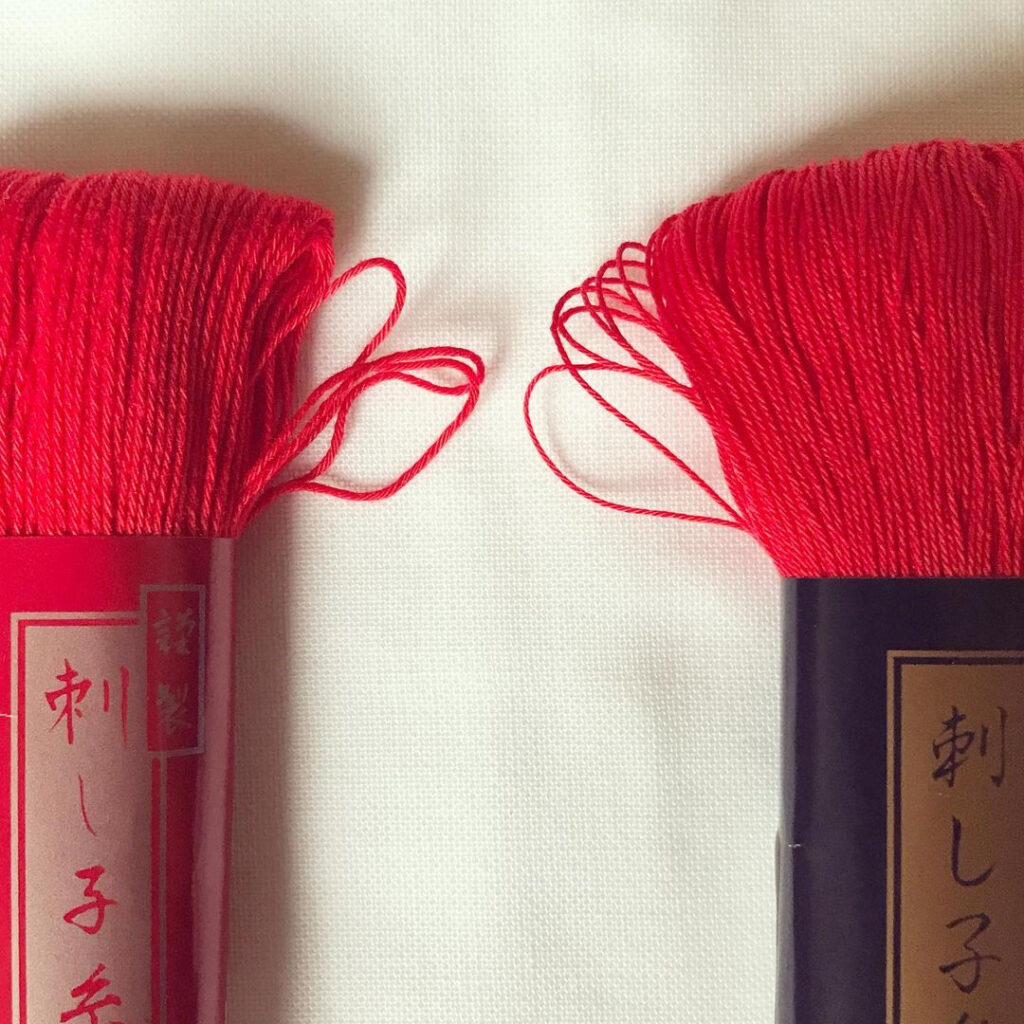
In Japan, we can buy sashiko threads in a wide variety of colors. We can even choose the thickness of the threads. But I know that’s not the case in other countries. When I used to live in New Zealand (2017-2019), the only sashiko thread I could find in town was the white thin sashiko thread. So I tried some embroidery flosses and cotton crochet yarns. Some people in Argentina who joined my online workshops were using macrame threads because finding proper sashiko threads in Argentina is almost impossible.
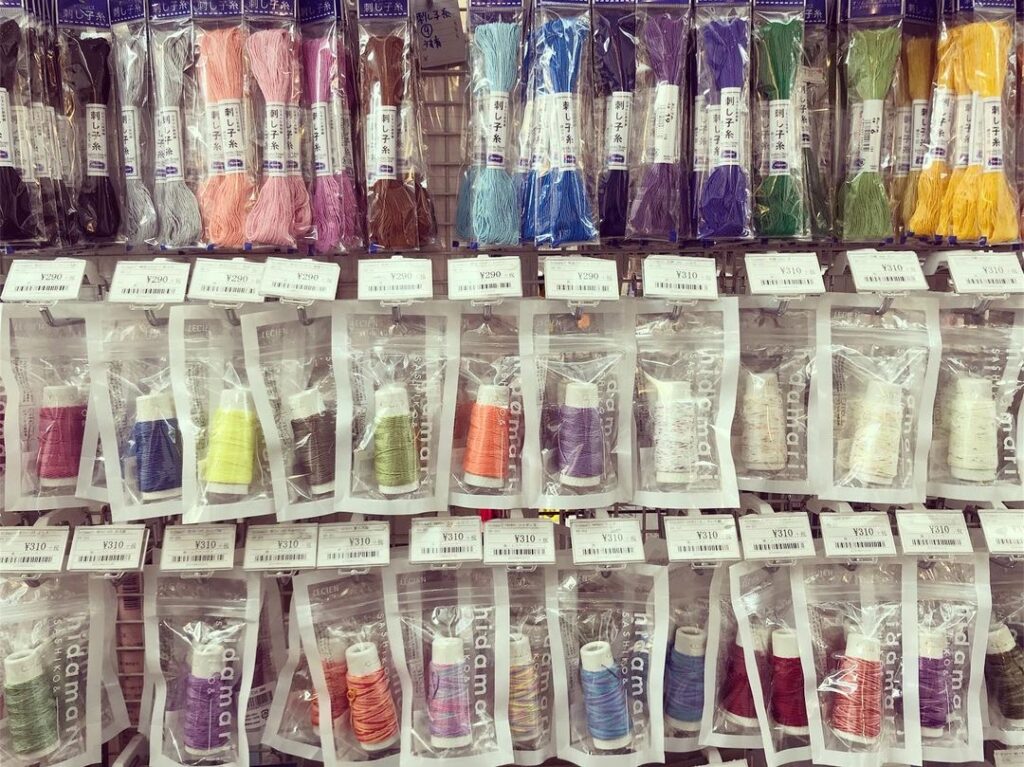
Using proper tools and materials makes the result much better, for sure. But in my perspective, you can start with what you have. Start small and whenever you feel ready, you can try the proper threads.
Tip for using embroidery floss
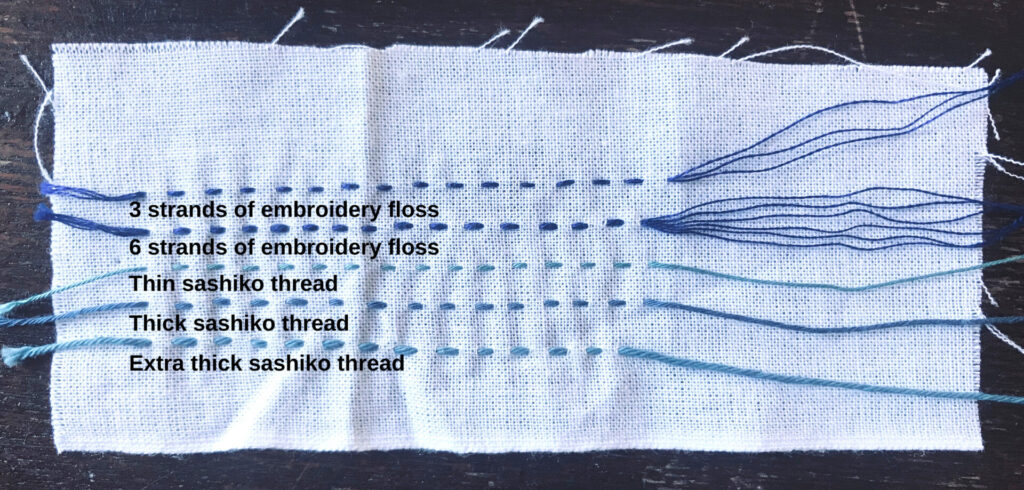
If you are using embroidery floss like DMC, this picture above will help you to decide how many strands to use. As you can see, three strands of embroidery floss is as thick as thin sashiko thread. For more strong stitches, make it four to six. Four or five strands will be same thickness with thick sashiko thread, and 6 strands will be as thick as extra thick sashiko threads.
You can read more about the thickness of the thread in this post :
3. Which needle should I choose?
Choosing the right needle is another issue when doing sashiko. There are various sashiko needles from different manufactures, and it’s no wonder you can’t choose.
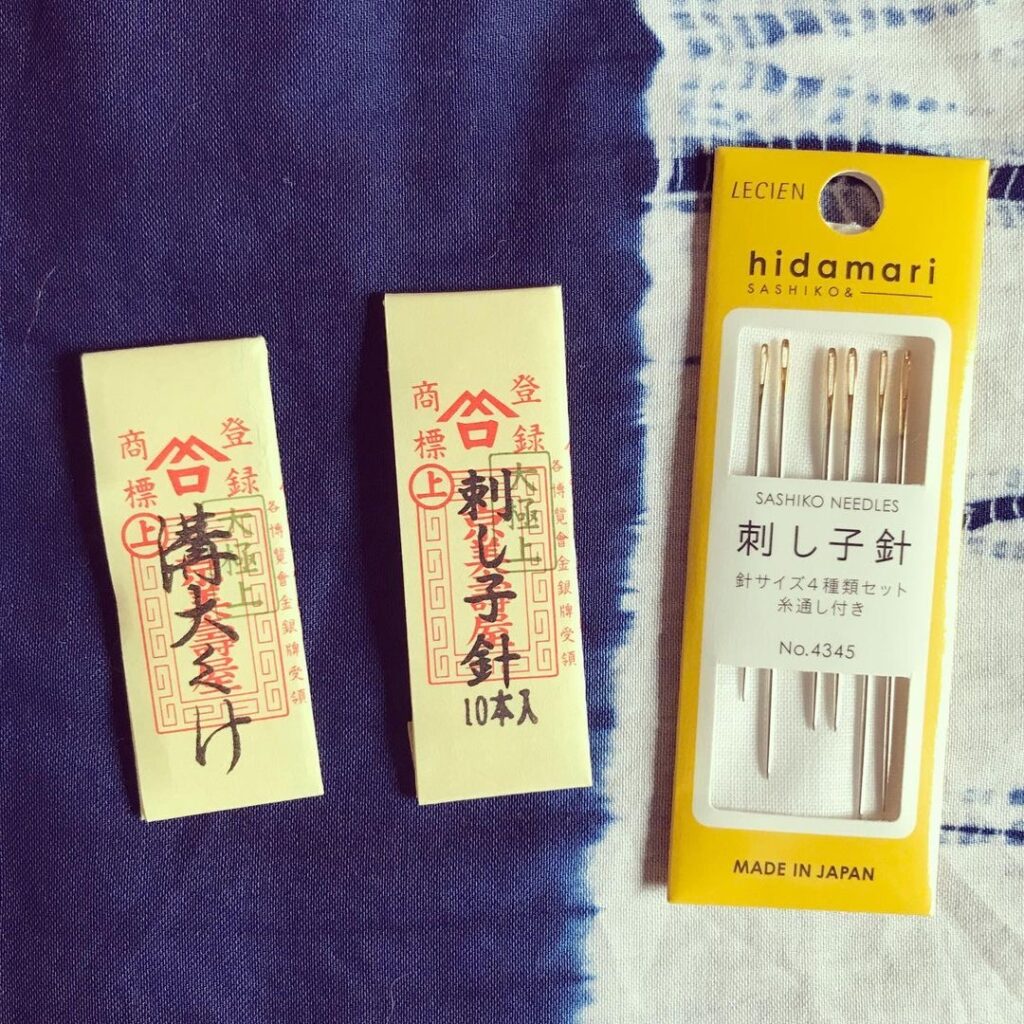
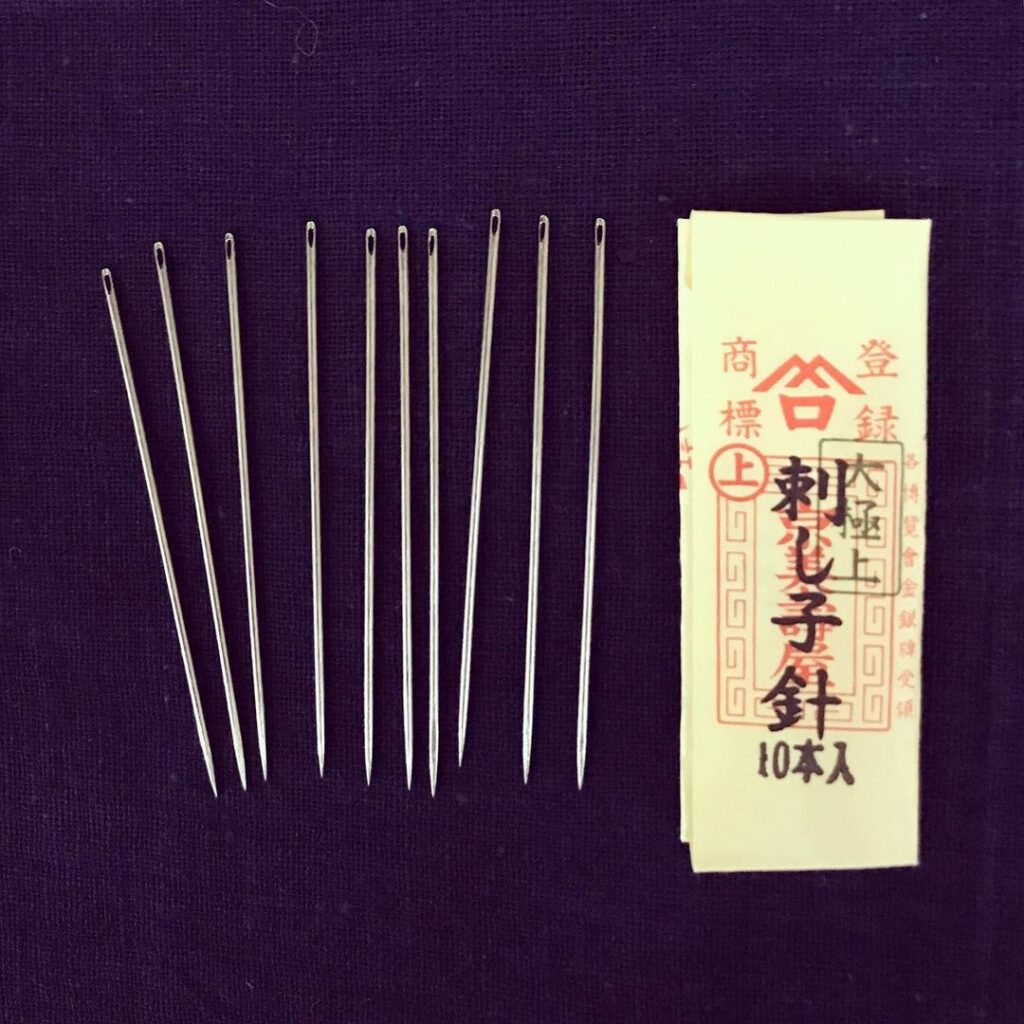
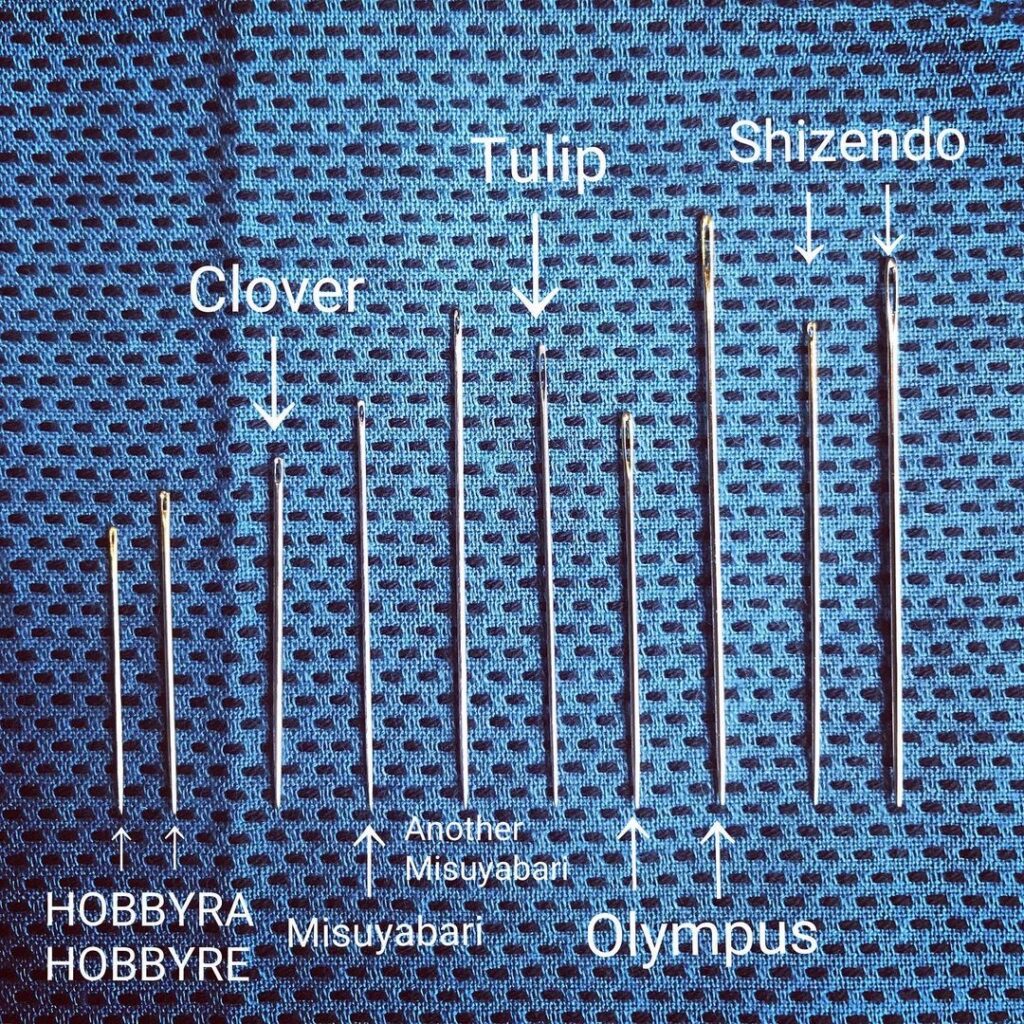
My personal favorite is a long and thick one from Misuyabari (needle store in Kyoto) but its hole is small and not suitable for everyone (my eyesight is 20/10 or 2.0 in Japanese scale by the way). So I chose the yellow packet from hidamari to add in my sashiko starter kit. What’s good about this is you can choose your favorite length from assorted needles. Also the eye is big enough, but not too big ( It’s important! ). For stitching hitomezashi patterns, I recommend you to use the long needles.
4. Fabric marker to draw the grid
Drawing the grid on the fabric is the key to stitch hitomezashi patterns. From that point of view, using chalk pencil is not a great idea because the line will be rubbed off while stitching. Instead, you can use any erasable markers such as water-soluble or heat erasable ones.
Size of the grid
As I wrote in the previous post, you need to draw the grid for all of 24 patterns. The grid size is 1cm and we stitch in the 8×8cm square each day.
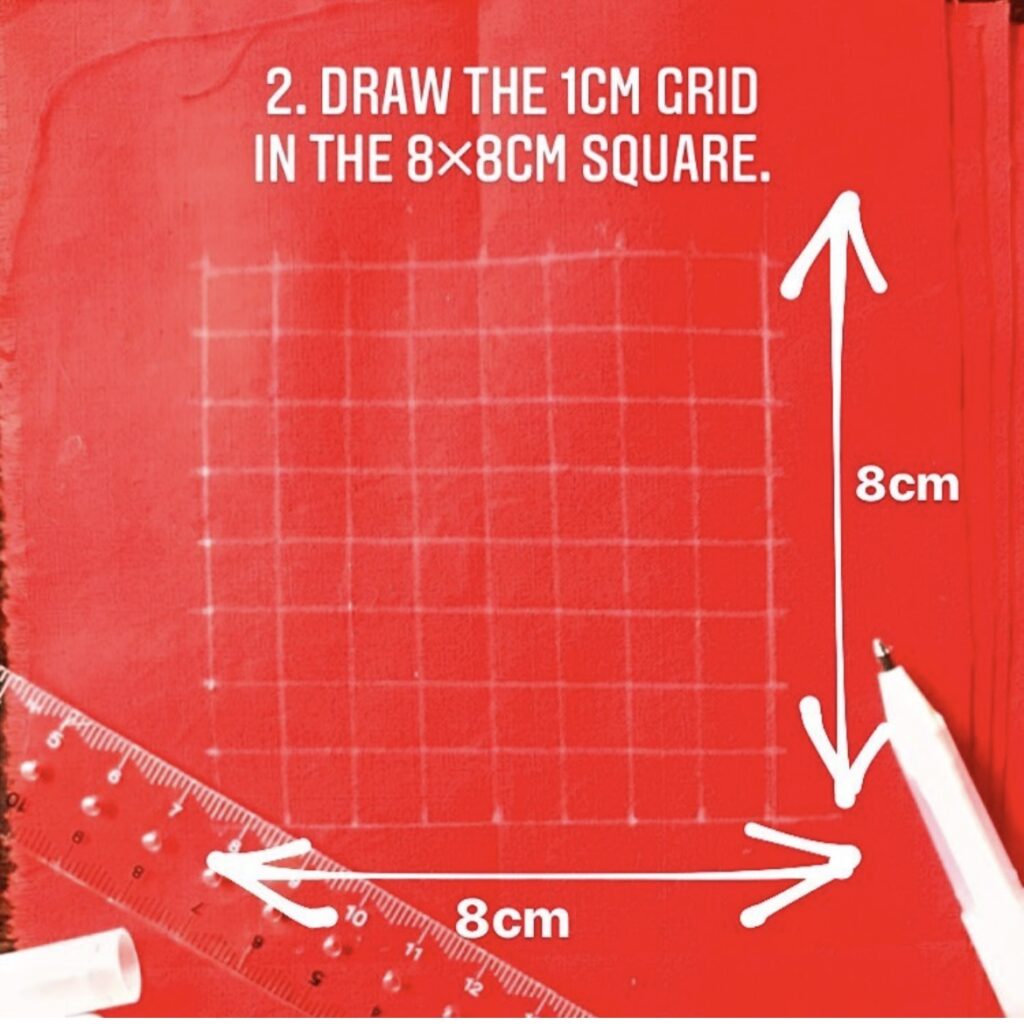
Let me say it again,
No special tools or materials needed!
In conclusions, you don’t need any special tools or materials. Pick a piece of fabric from your fabric stash, find some embroidery threads (or sashiko threads if you have) in your sewing box, choose a needle that matches your thread, and draw the grid, then you are ready to go! The program stars on October 24 2021. I’m so looking forward to sharing this program with you! (The registration for the program in 2021 is closed!)


